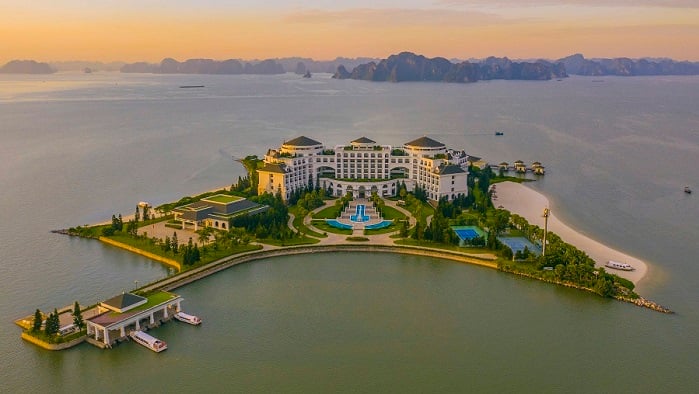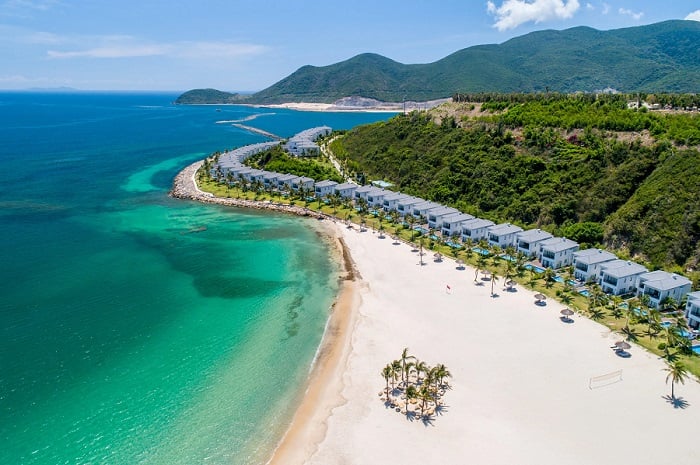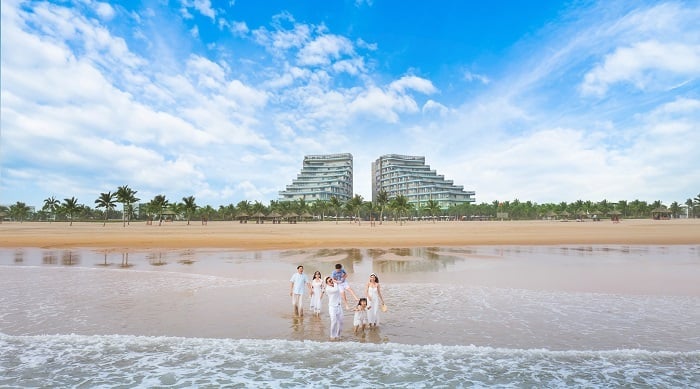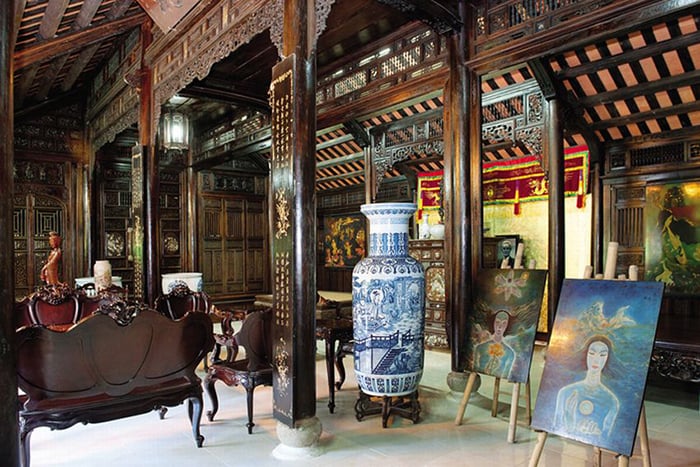
Vietnam's architecture is a showcase of rich history and cultural heritage. Despite being influenced by Western and Chinese styles during the colonial era, Vietnam has also developed its own unique architectural style. Whether you are already an architecture lover or just a casual admirer, this article will help you discover impressive structures and complete your Vietnam travel plan.
1. An overview of Vietnam's architecture
- A brief history of Vietnam's architecture and its unique features
Vietnam's architecture has a rich and captivating history spanning thousands of years. Over time, it has evolved and changed, reflecting the culture and values of each era.
The ancient period witnessed the development of structures such as temples, pagodas, and communal houses that showcased intricate carvings and detailed decorations. During the colonial period, Western culture led to a blending of European and Vietnamese styles, resulting in buildings with unique features such as yellow walls, red tile roofs, and wide verandas. Modern architecture in Vietnam emerged in the 20th century, emphasizing minimalism and functionality. Contemporary Vietnamese architecture blends tradition and modernity with designs that incorporate sustainable materials and innovative technology.
Despite the changes over time, Vietnam's architecture has maintained a focus on harmony and balance, with structures that seamlessly blend with the surrounding natural environment. This combination of history and unique features makes Vietnamese architecture a fascinating subject for exploration and study.
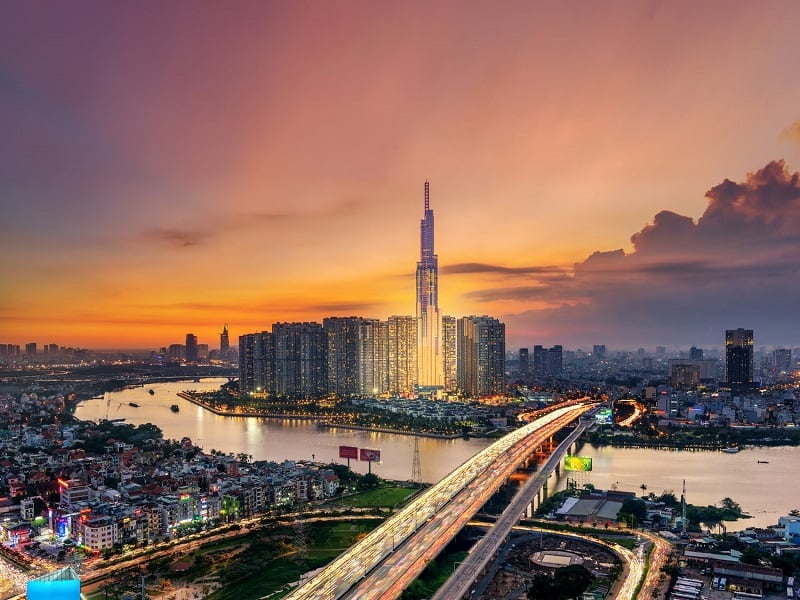
- The different architectural styles in Vietnam
Vietnam's architecture encompasses a diverse range of styles with unique features and influences. These styles include Vernacular, Imperial, Colonial, Modernist, and Contemporary architecture.
Vernacular architecture varies across regions and ethnic groups, while Imperial architecture showcases splendid palaces, temples, and tombs. Colonial architecture is a mixture of French and Vietnamese elements, and Modernist architecture emphasizes functionality and minimalism. Contemporary architecture blends tradition and modernity, often using sustainable materials and innovative technologies. Each style reflects Vietnam's history, culture, and societal values.
>>> Read more: Vietnam location to get yourself well-prepared!
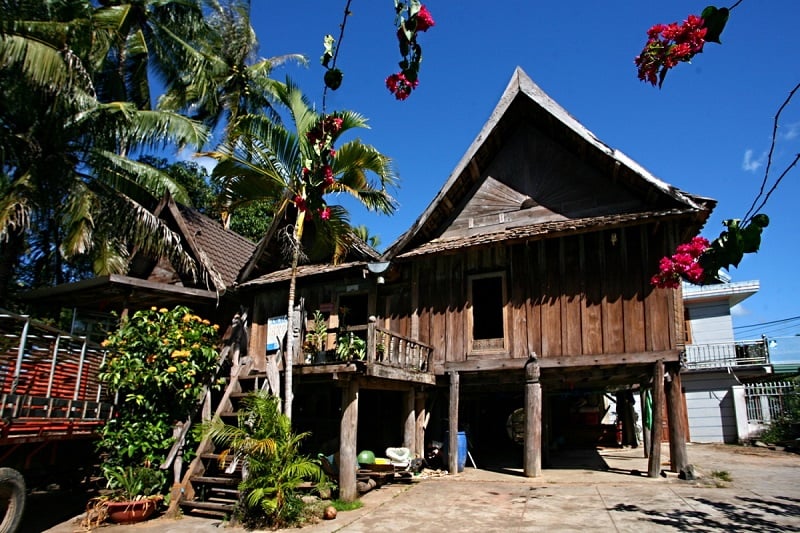
2. Top major landmarks of Vietnam's architecture
2.1. Vietnam ancient architecture
- One Pillar Pagoda, with special features in architecture and historical values, is a spiritual and cultural symbol of Hanoi. It has a unique structure, with eight wooden beams representing flower petals and a large stone pillar representing a lotus. The roof is covered with red brick scale tiles and features an exquisitely carved "double dragon adoring the moon," making it a delicate combination of architecture, painting, and stone sculpture.
- Japanese Covered Bridge is an architectural highlight of Hoi An Ancient Town that boasts a combination of Vietnamese, Japanese, and Chinese cultures in its architecture, design, and decorations. The bridge is made of red lacquered wood on top and stone at the base, with a stunning curved roof decorated with yin and yang patterns that symbolize Vietnamese culture and architecture.
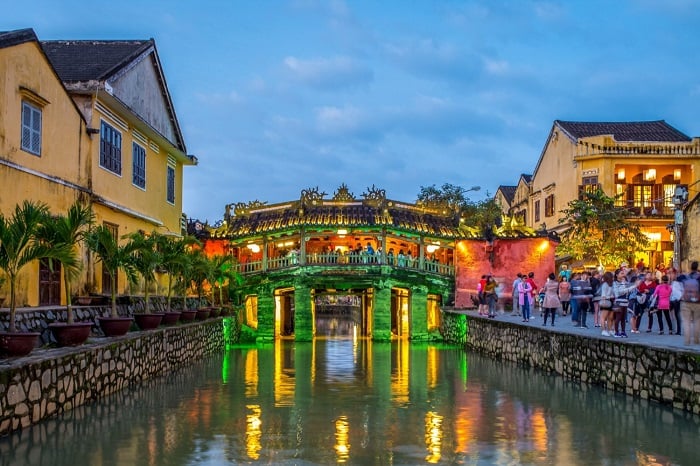
- Hue Imperial City, located in Hue, is a nearly square-shaped citadel that spans over 10 kilometers. Its curved front follows the gentle curve of the Perfume River, giving it the shape of a bow. The citadel blends French fortress structure and Eastern architectural features in harmony with the surrounding landscape. As a result, it is a one-of-a-kind military architectural masterpiece that stands out from other imperial citadels.
2.2. Vietnam French-style architecture
- Saigon Central Post Office in Ho Chi Minh City is Vietnam's oldest colonial structure that combines French architecture with Asian elements. It features a yellow facade with arched doors and windows, a clock that has been running for over 130 years, and the names of famous scientists engraved on its walls. Inside, there is a portrait of President Ho Chi Minh, a dome roof, and two large maps. Visitors can also rest on wooden chairs in the hall.

- Hanoi Opera House is a prime example of neo-classical French architecture with Gothic themes, inspired by classical Greek architecture and Paris’s Opera House. It features tall pillars, shuttered windows, classic roofs, and balconies. The Opera House spans an area of 2600 square meters and is about 34 meters high on average. Located on Trang Tien Street, one of the busiest streets in Hanoi, it stands adjacent to the modern Hilton Opera Hotel, also designed in French architecture.
- Notre Dame Cathedral, located in Ho Chi Minh City, is a beautiful illustration of French Colonial architecture with a blend of European and Vietnamese elements. Its impressive facade is made of red bricks imported from Marseille, France, and its two bell towers rise up to 58 meters in height. The cathedral's interior features a cruciform design with soaring ceilings and stained-glass windows, and its decor includes beautiful religious statues and paintings. The highlight of the cathedral is the Rose Window, which is made of stained glass and depicts the Virgin Mary and the baby Jesus surrounded by saints.
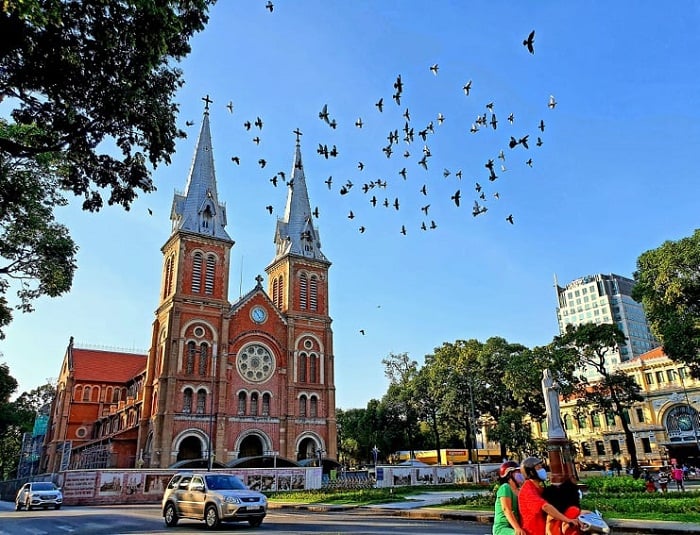
2.3. Vietnam modern architecture
- Bitexco Financial Tower is an iconic symbol of contemporary architecture in Ho Chi Minh City. The skyscraper combines Western and Eastern architectural elements at 68 floors and 262 meters high. The building's façade is made of glass and steel with a sleek and futuristic appearance, while the asymmetrical setbacks and cylindrical shape provide a distinctive look. Notably, the tower's rooftop looks like a blooming lotus, inspired by Vietnam's national flower, adding a touch of local cultural charm to the modern building.
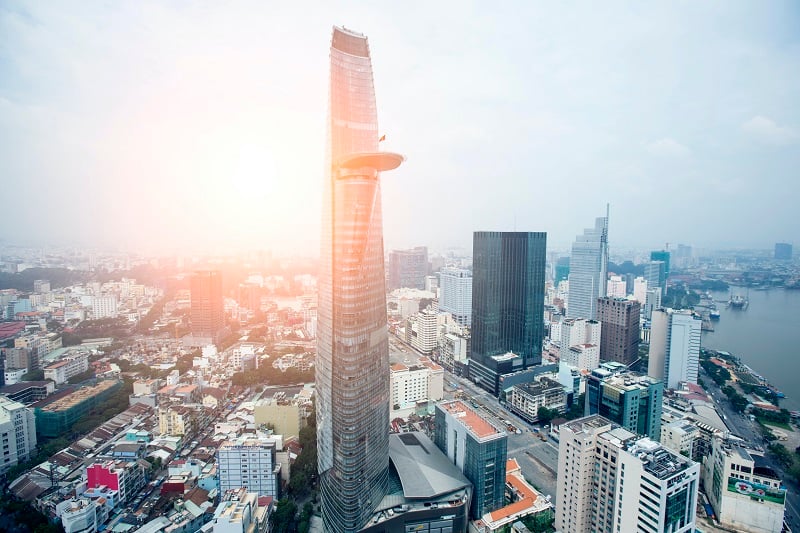
- Landmark 81 Vietnam is the tallest building in the country. The tower's design is inspired by bamboo shoots, a traditional Vietnamese symbol of prosperity and growth. It boasts a slender and tapering form with a series of setbacks to reduce wind load. Landmark 81's modern and futuristic appearance is emphasized by its glass and steel facade. Moreover, the tower offers visitors breathtaking views of the city from its large observation deck located on the top floor.
- Dragon Bridge is a unique example of modern architecture that incorporates traditional Vietnamese cultural elements. Spanning over the Han River, the bridge is designed in the shape of a dragon - a symbol of power, nobility, and good fortune in Vietnamese culture. The dragon's body is made of steel and illuminated with colorful LED lights at night, creating a stunning visual effect. The bridge is also equipped with a system of pipes and nozzles that release water and fire, creating the illusion of a dragon breathing fire and water and adding to the bridge's dramatic effect.
>>> Read more best places to visit in Vietnam to travel with ease!
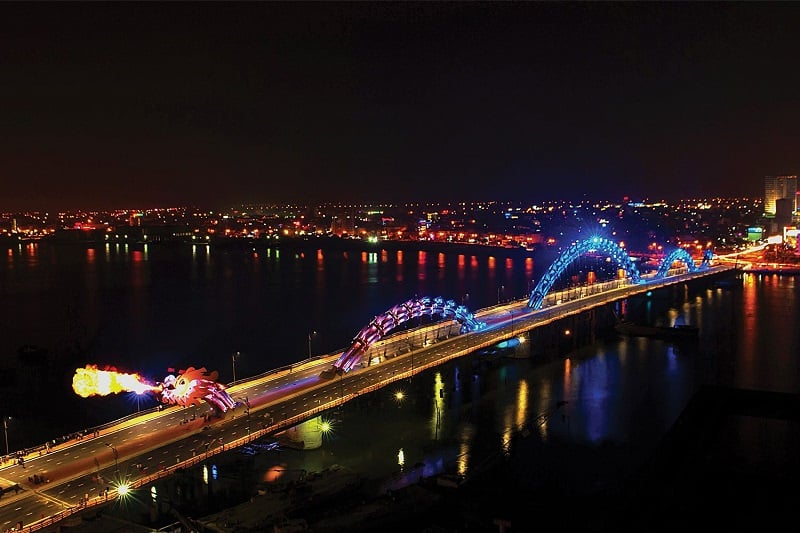
Among Vietnam's countless famous tourist destinations, Phu Quoc, Nha Trang, Hoi An, Da Nang, Ha Long are highly rated as the most fascinating and appealing destinations that attract a large number of tourists. To have a perfect trip, it is recommended that you choose a suitable location to stay in advance.
For a luxurious stay with all-inclusive services of high standards, choose to stay at Vinpearl Phu Quoc, Vinpearl Nha Trang, Vinpearl Resort & Golf Nam Hoi An, Vinpearl Resort & Spa Ha Long when visiting these stunning places. As a leading brand in the hospitality industry in Vietnam, Vinpearl offers an extensive range of upscale amenities and services, such as opulent restaurants, bars, swimming pools, and entertainment zones.
>>> Book rooms in Vinpearl Phu Quoc, Vinpearl Nha Trang, Vinpearl Resort & Golf Nam Hoi An, Vinpearl Resort & Spa Ha Long to create memorable moments with your loved ones!
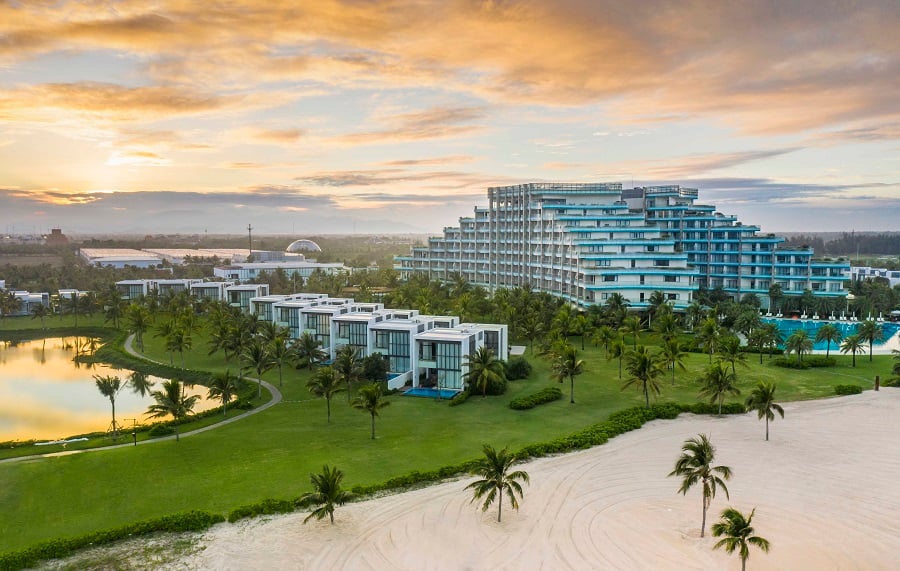
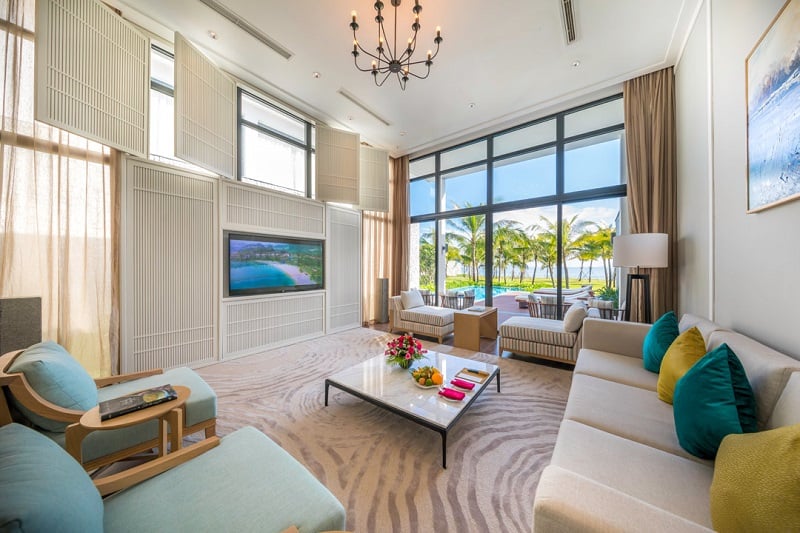
Vietnam's architecture is a fascinating blend of traditional and modern styles, influenced by various cultural and historical factors. From the ancient temples of Hue to the French colonial buildings in Hanoi and Ho Chi Minh City to the contemporary skyscrapers in major cities like Da Nang, Vietnam's architecture is a testament to its rich and diverse heritage. With ongoing efforts to preserve its architectural legacy and embrace innovative design, Vietnam is poised to continue shaping its urban landscape into a harmonious and captivating blend of the old and new.



_1713172306.png)
